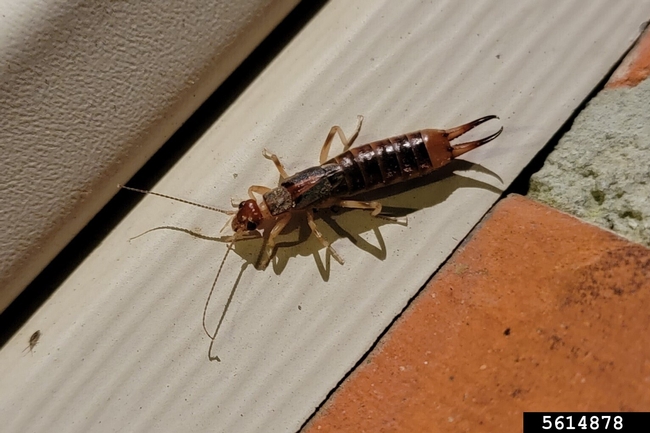During the holiday season, the only creatures you want stirring in your home are your family, friends, and pets. But as temperatures drop, and the rain returns, some pests may seek shelter indoors with you. Rats and mice can be problems all year but in the cold weather, they prefer the warmth of your home to being outdoors and you might see more in your home.
Pests invade homes for varying reasons during autumn and winter. Common outdoor species such as Argentine ants, Oriental (or Turkestan) cockroaches, sowbugs and pillbugs, springtails, and earwigs, may simply be escaping harsh conditions such as freezing temperatures or small-scale flooding. Some insects, especially true bugs (Hemiptera); such as boxelder bug, bordered plant bug, milkweed bug and other seed bugs, false chinch bug, and various stink bugs, naturally seek out dry, protected cracks and crevices to spend the winter. In the landscape, such sites may be beneath loose tree bark or deep within firewood piles, but structural gaps, cracks and crevices may be warmer, drier, and more attractive to these overwintering bugs.
It's generally easier to keep pests out before they become a problem than to try and get rid of them once they infest your home. Exclude pests by sealing up possible entry points around doors, windows, foundations, chimneys, roof joints, shingles, and vents. Install door sweeps and threshold seals to get rid of gaps under and around doors. If you have gaps around windows, you can close them with weather stripping and expanding foam or install new screens.
Clean up the landscape around your home so pests have fewer places to live and breed. Move wood chips and other organic mulches, and firewood piles away from your home's perimeter and entryways. Drain any excess moisture near structural foundations and entryways.
If you spot nuisance pests like boxelder bugs, earwigs, springtails, and centipedes indoors, they can be simply swept up, vacuumed, or taken outside. Other pests like mice and rats need to be dealt with differently.
Ideally, mice and rats should be managed before they get inside. Check the exterior of your home for signs of a mice or rat infestation including droppings, gnaw marks, feeding damage, and rub marks. For mice and rats, tight fitting lids on garbage cans and compost containers will keep these rodents from finding a food source near your home and eventually coming indoors. Thin vegetation between shrubs and buildings and trim back overhanging trees. Roof rats will use climbing vegetation to scale buildings and seek shelter. Seal any cracks or gaps into your home that are larger than 1/4 inch. Screen or block potential entrances under eaves or overlapping roof sections. Use sheet metal or 1/8-inch wire hardware cloth to keep out mice and rats since rodents can gnaw through softer material like plastic or wood.
Snap traps are the safest, most effective, and most economical way to manage rats and mice. You can place traps outside the home to catch rodents before they enter. You can also place them inside if you spot signs of them there. Be sure to use the correct-sized traps and place them in secluded areas along walls, behind objects, in dark corners, and in places where droppings have been found.
Keep pests from ruining your holiday fun by denying them food, water, and shelter in your home. For more details about specific pests and their management, see the UC IPM website https://ipm.ucanr.edu/PMG/menu.homegarden.html.
[Originally featured in the Winter 2023-2024 edition of the Home & Garden Pest Newsletter.]
